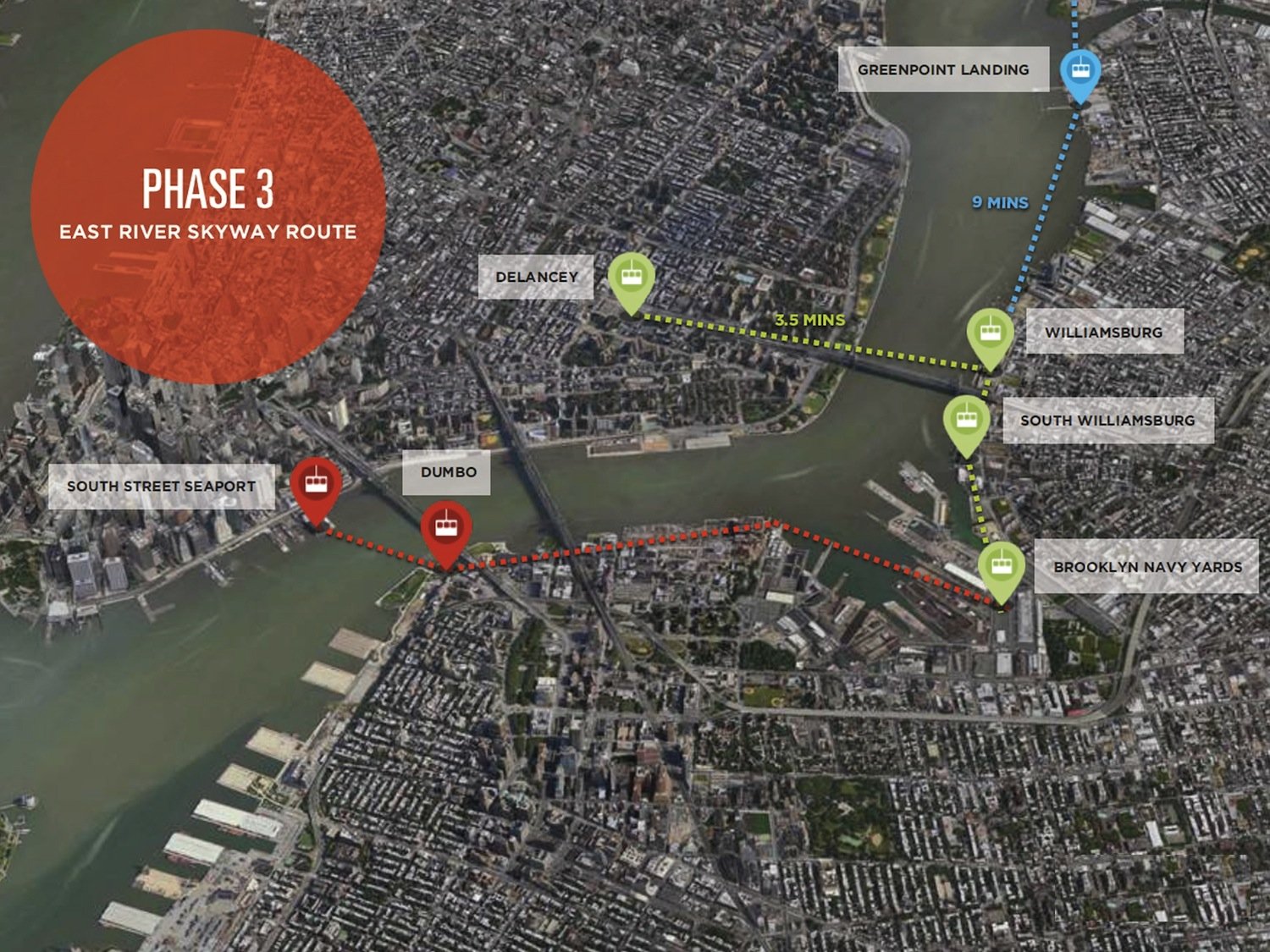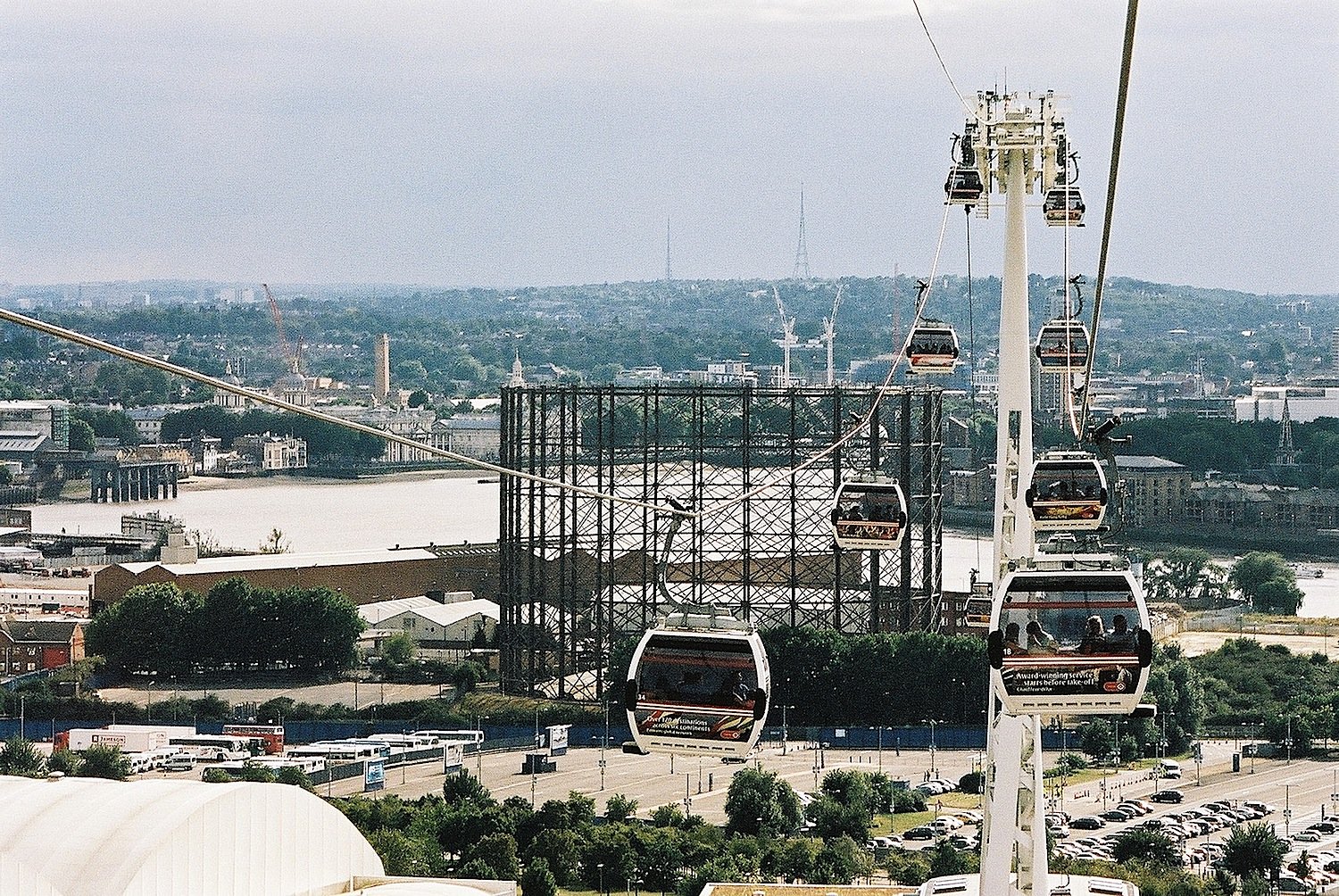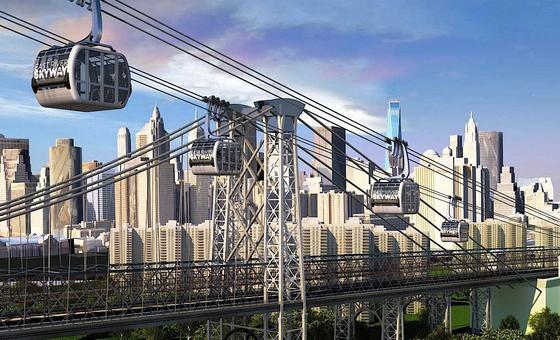A cable car to relieve traffic in the Big Apple – that’s what a New York real estate agent suggests. He has already presented corresponding plans for how Manhattan, Queens and Brooklyn could be connected. He is not alone with this idea: inner-city cable cars are currently being built around the world.
–
Daniel Levy, managing director of the real estate company CityRealty, made the proposal for the cable car. It could bring more than 5000 people an hour across the East River.
Foto: East River Skyway
–
New York is not just any city, for many people it is the city par excellence: lively, pulsating, always on the move – and full. Especially at rush hour, the lifelines of this metropolis, the streets and subways, are almost clogged. Even those who have never been to New York know the streets, on which nothing works despite countless tracks, from films. Switching to the subway is only possible to a limited extent, individual lines are so heavily frequented that no additional trains can even be used.
When everything is exhausted under and on the road: why not just move upstairs? A cable car is needed, has now suggested Daniel Levy, managing director of the real estate company CityRealty. Nobody has yet decided on the construction or even seriously discussed it, but the project called East River Skyway has long since left the stage of the pure idea: There are already plans, possible routes and a rough calculation of the costs.
Gondola is to connect Manhattan and Brooklyn
Levy’s vision is three-tiered. In the first phase, a gondola connects the Lower East Side of Manhattan with the Brooklyn Navy Yard and crosses the East River in the process. On the way, passengers can get on or off at two stations in Brooklyn’s Williamsburg district. The journey time between the two stations on the east and west side of the river is just three and a half minutes. A cable car would be fast – and it would also give users a different perspective on their city.

The gondola route is to be built in three phases, each costing between 60 and 100 million euros. Critics criticize the route, which ignores the needs of commuters.
Quelle: East River Skyway
–
In further phases, connections to Queens in the north and then back to Manhattan (phase 2) and directly from the Navy Yards to the west, also via the East River to Manhattan, could follow; also with up to three intermediate stations. Levy puts the costs at just under 60 to 100 million euros per phase. This means that the price of a cable car would definitely be well below the cost of new streets or even subway lines, which is hardly quantifiable for New York – quite apart from the fact that nobody knows where and how to integrate them into the almost completely built-up city should.
A cable car system, on the other hand, would be minimally invasive, as the German traffic expert Heiner Monheim explains in a report by the online portal Green Wiwo. It is easy to assemble and, if necessary, to dismantle, is quiet and low in emissions. More than 5,000 people per hour could travel across the East River with such a cable car, according to Daniel Levy: A gondola can hold up to 48 people, and one could depart every 30 to 40 seconds.
Criticism of the route
Of course, there is also criticism: A cable car with the route planned by Levy connects almost only stations located directly on the water, which are just as easy to operate by ship – only the Delancey terminus of the very first section of the route is further in the city. The US online portal wired.com, for example, reports that the railway would bypass the needs of the majority of commuters.

In 2012, the Emirates Air Line, a cable car that connects the districts of Greenwich and Docklands and crosses the Thames, went into operation in London.
Quelle: Flickr/Eugene Regis
–
This would only benefit part of the New York population – namely the relatively affluent population of the Williamsburg borough. This area is already reserved for the rich, and a cable car project would increase the attractiveness and thus the housing costs even more. No wonder, it is said, that a vision of this kind comes from a real estate agency, of all places.
The cable car would be in good company
The idea of using cable cars in cities is not new – gondolas have long been reserved for winter sports enthusiasts in the mountains, although the two market leaders in this field, Doppelmayr and Leitner, come from the Alpine region. A cable car recently opened in the Turkish capital Ankara, writes Green Wiwo; these systems also exist in Rio de Janeiro in Brazil, in Caracas in Venezuela and in other cities. Hamburg, on the other hand, decided against such a project – the population found a cable car over the Elbe too touristy and not suitable for everyday use.
Job search for engineers
And even in New York there is already a cable car: The Roosevelt Island Tramway, which connects Roosevelt Island with Manhattan. In 1976 it was originally built as a temporary measure because the construction of the subway line under the East River was delayed. After the cable car was opened in 1989, the cable car stayed, but is mainly used by tourists today.
–

